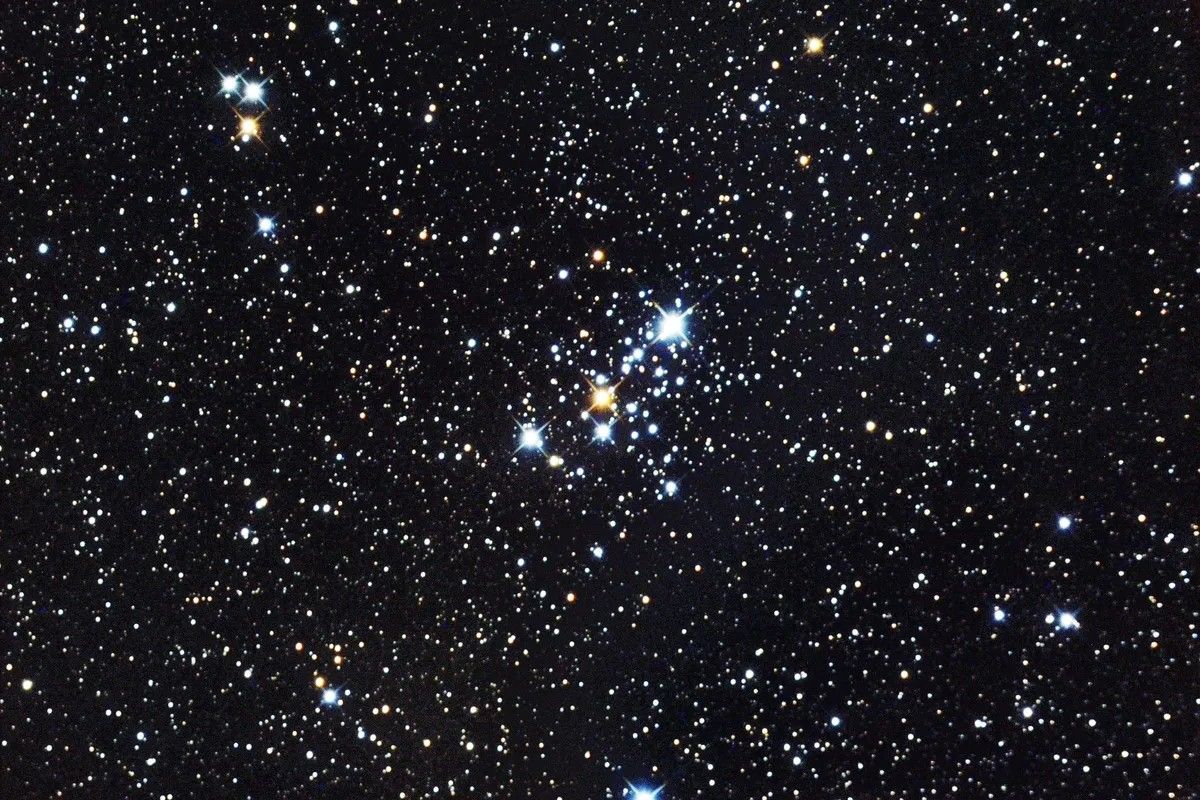
What exactly is an open cluster? Open clusters are groups of stars that were born from the same giant molecular cloud and are loosely bound by mutual gravitational attraction. These stellar families can contain anywhere from a few dozen to a few thousand stars. Unlike their denser cousins, globular clusters, open clusters are found primarily in the Milky Way's spiral arms. They play a crucial role in our understanding of stellar evolution because their stars are roughly the same age and composition. Open clusters are often studied to learn about the formation and evolution of galaxies. They also provide a spectacular view through telescopes, making them a favorite among amateur astronomers.
What Are Open Clusters?
Open clusters are groups of stars that are born from the same molecular cloud and are gravitationally bound. They are fascinating objects in the universe, offering insights into stellar formation and evolution.
- Open clusters usually contain a few hundred to a few thousand stars.
- These clusters are relatively young, often less than a few hundred million years old.
- They are found in the disk of the Milky Way galaxy.
- The stars in an open cluster are roughly the same age and have similar chemical compositions.
- Open clusters are less densely packed than globular clusters.
Famous Open Clusters
Some open clusters are well-known and have been studied extensively. These clusters are often visible to the naked eye or through small telescopes.
- The Pleiades, also known as the Seven Sisters, is one of the most famous open clusters.
- The Hyades cluster is the closest open cluster to Earth.
- The Beehive Cluster, also known as Praesepe, is another well-known open cluster.
- The Double Cluster in Perseus consists of two open clusters, NGC 869 and NGC 884.
- The Jewel Box Cluster, located in the constellation Crux, is known for its colorful stars.
How Open Clusters Form
Understanding the formation of open clusters helps astronomers learn about the birth of stars and the conditions in molecular clouds.
- Open clusters form from giant molecular clouds that collapse under their own gravity.
- The process of star formation in open clusters can take millions of years.
- Massive stars in open clusters can trigger the formation of new stars by compressing nearby gas.
- Open clusters often contain a mix of stars at different stages of their life cycles.
- The presence of massive stars in open clusters can lead to the formation of supernovae.
The Evolution of Open Clusters
Open clusters do not remain bound forever. Over time, they disperse and their stars become part of the galactic field.
- Open clusters gradually lose stars due to gravitational interactions with other stars and molecular clouds.
- The lifespan of an open cluster is typically a few hundred million years.
- As open clusters age, they become less densely packed.
- The stars in an open cluster can eventually drift apart and become part of the general stellar population.
- Some open clusters can survive for billions of years if they are in a relatively isolated region of the galaxy.
Observing Open Clusters
Amateur astronomers and professionals alike enjoy observing open clusters. They are often targets for telescopes of all sizes.
- Open clusters are best observed with binoculars or small telescopes.
- They are often found in the Milky Way's spiral arms.
- The best time to observe open clusters is during clear, dark nights away from city lights.
- Some open clusters can be seen with the naked eye, especially in dark skies.
- Star charts and astronomy apps can help locate open clusters in the night sky.
The Importance of Open Clusters in Astronomy
Open clusters play a crucial role in our understanding of the universe. They provide valuable data for various fields of astronomical research.
- Open clusters are used to study stellar evolution and the initial mass function.
- They help astronomers calibrate the distance scale of the universe.
- Open clusters are important for understanding the chemical evolution of the Milky Way.
The Final Frontier
Open clusters are fascinating celestial gatherings that offer a glimpse into the universe's dynamic nature. These star groups, bound by gravity, provide clues about stellar evolution, galactic formation, and the cosmos' vastness. They serve as cosmic laboratories, helping astronomers understand how stars are born, live, and die.
From the Pleiades' bright stars to the Hyades' V-shaped cluster, each open cluster tells a unique story. Observing these clusters can be a thrilling experience, whether you're a seasoned astronomer or a curious stargazer. They remind us of the universe's beauty and complexity, sparking wonder and curiosity.
So next time you gaze at the night sky, remember those twinkling stars might be part of an open cluster, sharing their ancient secrets with anyone willing to look up and listen. The universe is full of wonders, and open clusters are just one of its many marvels.
Was this page helpful?
Our commitment to delivering trustworthy and engaging content is at the heart of what we do. Each fact on our site is contributed by real users like you, bringing a wealth of diverse insights and information. To ensure the highest standards of accuracy and reliability, our dedicated editors meticulously review each submission. This process guarantees that the facts we share are not only fascinating but also credible. Trust in our commitment to quality and authenticity as you explore and learn with us.
